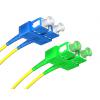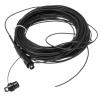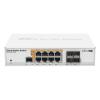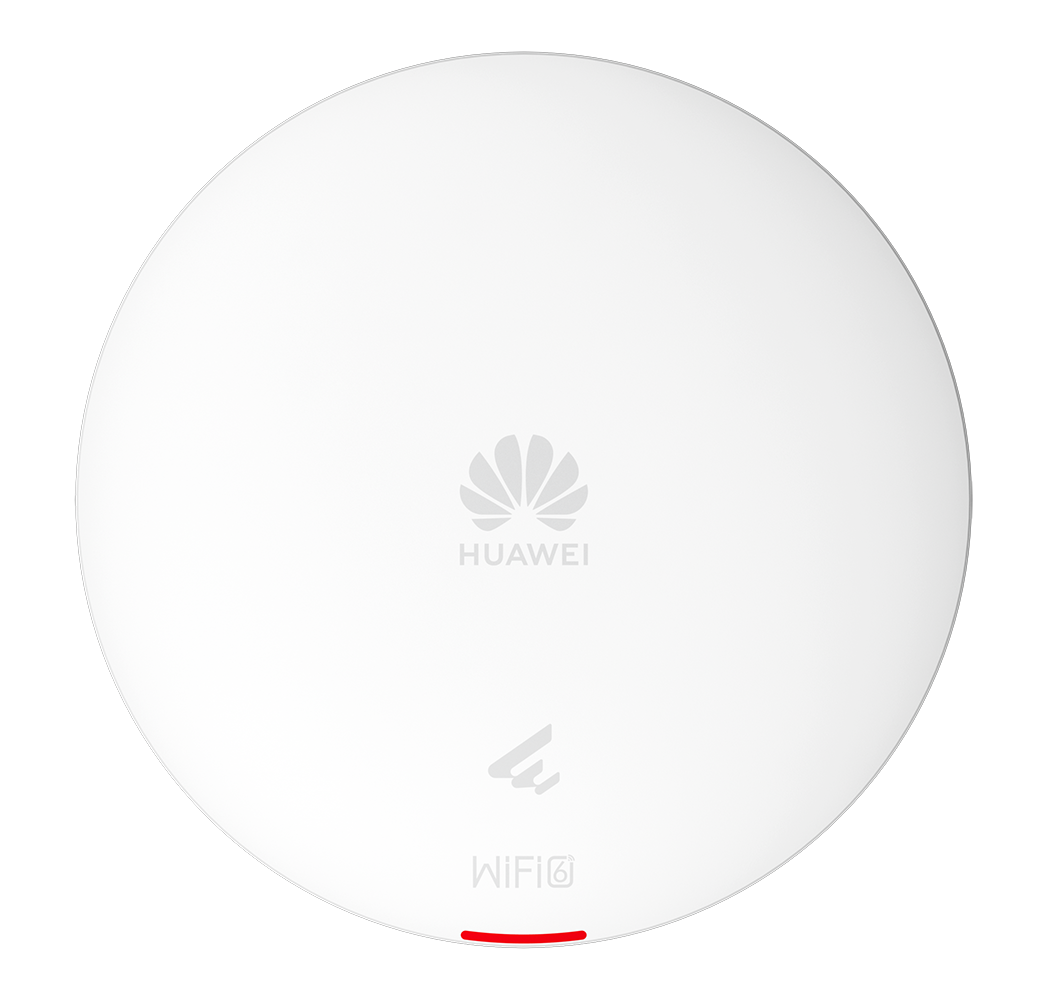-
Kč

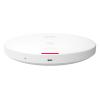
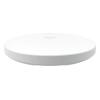
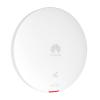

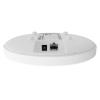


Huawei AP362 è un access point della serie eKitEngine che supporta lo standard Wi-Fi 6. Supporta IEEE 802.11 b/g/n/ax nella banda a 2,4 GHz e IEEE 802.11 a/n/ac/ax nella banda a 5 GHz. Il throughput massimo teorico è rispettivamente di 574 Mbps a 2,4 GHz e 2402 Mbps a 5 GHz. Il dispositivo supporta MU-MIMO (trasmissione e ricezione simultanea di dati da più utenti), colorazione BSS (tagging della trasmissione per ridurre le interferenze) e TWT (Target Wake Time - una funzione per ridurre il consumo energetico). Il punto di accesso è dotato di un'antenna intelligente, il cui design è costituito da più elementi che possono funzionare in modo indipendente. Gli elementi dell'antenna possono modificare la forma del fascio principale a seconda delle esigenze e adattarsi ai client collegati. La custodias dell'AP362 è stata adattata per il montaggio a parete, a soffitto o su una guida a T. Il dispositivo dispone di 1 porta Gigabit Ethernet (10/100/1000 Mbps), che funge contemporaneamente da ingresso di alimentazione PoE secondo lo standard IEEE 802.3 af. L'alimentazione può essere fornita anche tramite una presa CC (la tensione di ingresso è di 12 V).
Il prodotto offerto può funzionare in diverse modalità: Fat AP, Leader AP, Fit AP o Cloud. In modalità Fat AP, il dispositivo funziona come un dispositivo indipendente; è possibile configurarlo come un normale router wireless. La modalità Leader AP consente di configurare l'AP362 come dispositivo master (leader) per gestire altri access point compatibili. La modalità Cloud consente al dispositivo di connettersi a un controller situato nel cloud, mentre la modalità Fit AP viene utilizzata per connettersi a un altro controller WLAN AC fisico. Le soluzioni della serie eKitEngine consentono di creare una rete wireless estesa ed efficiente, in grado di coprire aree molto ampie con la sua portata. I dispositivi supportano il roaming dei dati, il controllo della larghezza di banda e diversi metodi di autenticazione. Sono ideali per un'ampia gamma di applicazioni, dalle abitazioni alle grandi aziende e ai ristoranti.
Rete Wi-Fi 6 AX3000
L'AP362 è compatibile con il Wi-Fi 6 e supporta IEEE 802.11 b/g/n/ax nella banda da 2,4 GHz e IEEE 802.11 a/n/ac/ax nella banda da 5 GHz. Il throughput massimo teorico è rispettivamente di 574 Mbps a 2,4 GHz e 2402 Mbps a 5 GHz. Si tratta di una velocità abbastanza sufficiente per la maggior parte delle applicazioni che un utente può intraprendere su Internet, tra cui la visione di video 4K online, il gioco o il download di file di grandi dimensioni.
Il punto di accesso si avvale inoltre di una serie di funzioni aggiuntive che influiscono positivamente sulla qualità della rete. MU-MIMO consente a più client di trasmettere e ricevere contemporaneamente, eliminando la coda dei dati. Il Beamforming viene utilizzato per modellare il fascio di luce e migliorare la connettività dei dispositivi ai margini della copertura, mentre il TWT consente di risparmiare energia svegliando i dispositivi connessi solo quando viene stabilita una trasmissione.
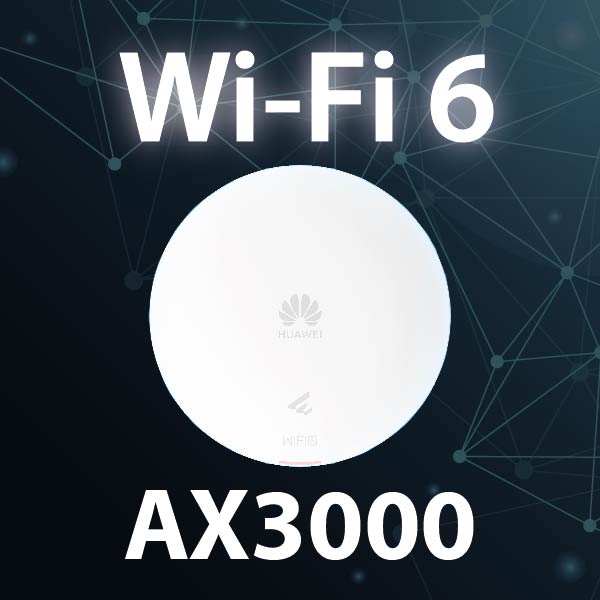
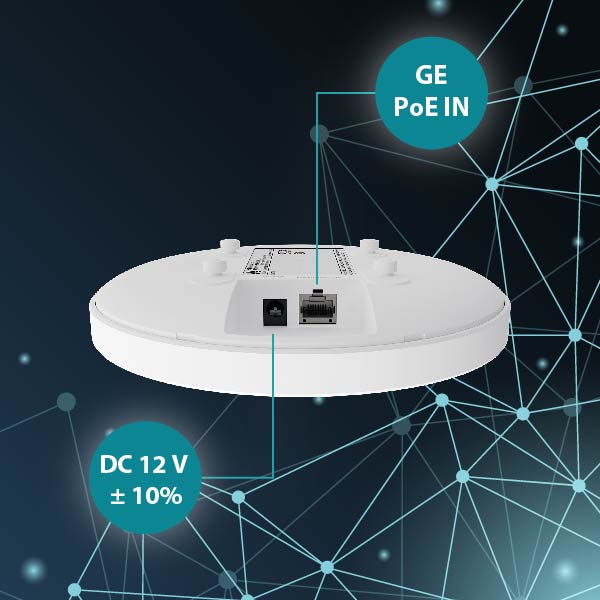
Porta Gigabit Ethernet, alimentazione PoE/presa DC
Il prodotto offerto è dotato di 1 porta Gigabit Ethernet (10/100/1000 Mbps), che funge contemporaneamente da ingresso di alimentazione PoE secondo lo standard IEEE 802.3 af. L'alimentazione può essere fornita anche tramite una presa DC standard, nel qual caso la tensione in ingresso è di 12 V. Il consumo massimo di energia è di 11,2 W.
Antenne Smart
Il punto di accesso è dotato di antenne intelligenti; il design dell'antenna è costituito da più elementi che possono funzionare in modo indipendente l'uno dall'altro. Gli elementi dell'antenna possono modificare la forma del fascio principale in base alle esigenze per garantire la migliore copertura possibile ai client connessi. Il dispositivo si adatta alle condizioni radio e fornisce una copertura molto migliore rispetto agli AP dotati di normali antenne omnidirezionali. Il guadagno energetico in entrambe le bande è di 4 dBi.
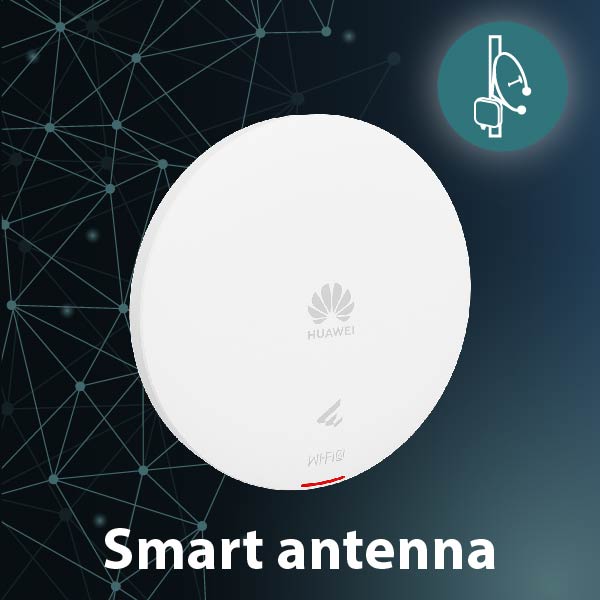

Fino a 256 clienti
L'AP362 di Huawei può supportare fino a 256 dispositivi client connessi simultaneamente. Gli AP della serie eKitEngine sono ideali per i luoghi in cui sono presenti, o potrebbero essere presenti, più utenti. Il sistema supporta il bilanciamento del carico e il roaming intelligente; se un AP è sovraccarico, gli utenti vengono spostati su altri AP.
L'algoritmo DFA viene utilizzato per rilevare automaticamente il consumo dei canali wireless e riconoscere le trasmissioni che si sovrappongono. Quando vengono utilizzati più punti di accesso, questi operano in modo da non interferire l'uno con l'altro. Inoltre, le tecnologie EDCA e di programmazione dell'ora d'aria consentono di programmare l'utilizzo del canale da parte di un determinato dispositivo client, in modo che ogni dispositivo abbia lo stesso accesso alla rete.
Un importante vantaggio del sistema eKitEngine basato su AP è l'ottimizzazione dell'utilizzo della rete da parte dei dispositivi client. I client con una copertura insufficiente o una velocità di connessione troppo bassa vengono automaticamente disconnessi per migliorare la qualità complessiva della trasmissione. L'AP362 dispone anche di una funzione 5G-prior: i dispositivi client vengono collegati principalmente nella banda dei 5 GHz per garantire la migliore larghezza di banda possibile. Questo riduce significativamente il carico e le interferenze nella banda a 2,4 GHz.
Sistema wireless avanzato
Il prodotto offerto è progettato per funzionare in un sistema wireless di grandi dimensioni composto da molti punti di accesso. Una rete così creata è in grado di coprire aree anche molto vaste, a seconda del numero di dispositivi utilizzati. Il sistema supporta il roaming dei dati; gli utenti passano automaticamente da un punto di accesso all'altro senza perdere la connessione.
Le soluzioni di Huawei offrono un gran numero di funzioni relative al controllo della larghezza di banda, al miglioramento della qualità della trasmissione e alla sicurezza. Per l'autenticazione degli utenti è possibile utilizzare, tra gli altri, 802.1x, indirizzo MAC o captive portal. Il sistema avanzato di gestione e monitoraggio delle prestazioni vi permetterà di ridurre il tempo dedicato all'amministrazione della rete, ad esempio rilevando e riconoscendo automaticamente vari tipi di errori.


Quattro modalità operative
Il punto di accesso può funzionare in quattro modalità:
- Fat AP - il punto di accesso funziona in modo indipendente, la configurazione e la gestione sono simili a quelle dei router wireless standard. Si rivela utile nelle piccole reti in cui si utilizza un solo AP.
- Leader AP - consente di configurare il dispositivo come “leader” e quindi di assumere la funzione di controller della rete. In modalità Leader AP, è possibile collegare altri access point al dispositivo, in modo da creare un sistema esteso. Questa modalità è più adatta alle reti di piccole dimensioni, ad esempio negli uffici o nei ristoranti. Riduce i costi associati all'acquisto di un controller aggiuntivo.
- Cloud AP - in questa modalità, è possibile gestire il punto di accesso da una piattaforma disponibile nel cloud. Questa piattaforma rende molto più semplice il monitoraggio del funzionamento e l'esecuzione di preconfigurazioni e non richiede dispositivi di gestione aggiuntivi.
- Fit AP - è la modalità di base in cui l'access point si collega al controller.
Numerose applicazioni
L'AP362 di Huawei troverà impiego in moltissimi luoghi. Grazie all'elevato throughput e alle sue prestazioni, si rivelerà utile nelle case e nelle piccole imprese come unico punto di accesso. È possibile utilizzarlo con successo anche in grandi reti avanzate composte da molti dispositivi. Supporta numerose funzioni moderne e può essere utilizzato come AP di base in reti avanzate ed estese.

Caratteristiche
| Huawei AP362 | |
| Caratteristiche generali | |
|---|---|
| Dimensioni (diametro x altezza) | Φ180 mm x 35 mm |
| Peso | 0,51 kg |
| Interfacce fisiche |
1 porta Gigabit Ethernet (10/100/1000 Mb/s) (entrata PoE) |
| LED | I LED indicano l'accensione, l'accensione del dispositivo, gli allarmi e gli errori di sistema. |
| Caratteristiche dell'alimentazione | |
| Ingresso di alimentazione |
Presa DC: 12 V ± 10% PoE: nello standard IEEE 802.3 af |
| Consumo massimo di energia | 11,2 W |
| Caratteristiche ambientali | |
| Temperatura di esercizio consentita | Od -10 do 50 st. C |
| Temperatura di stoccaggio consentita | Od -40 do 70 st. C |
| Umidità ammessa | 5%-95% niekondensująca |
| Caratteristiche radio | |
| Tipo di antenna | Antenne intelligenti integrate |
| Guadagno di energia |
2,4 GHz: 4 dBi 5 GHz: 4 dBi |
| Numero massimo di SSID per radio | ≤ 16 |
| Numero massimo di utenti | ≤ 256 |
| Potenza massima di trasmissione |
2.4 GHz: 20 dBm |
| Controllo della potenza | Precisione a 1 dBm |
| Numero massimo di canali non sovrapposti |
2.4 GHz (2.412 GHz - 2.472 GHz) 802.11 b/g
802.11 n
802.11 ax
5 GHz (5.18 GHz - 5.825 GHz) 802.11 a
802.11 n
802.11 ac
802.11 ax
(l'elenco completo dei canali dipende dalle condizioni legali locali) |
| Modalità Fat/Fit AP | |
| Proprietà WLAN |
Standard IEEE 802.11 b/g/n/ax (2,4 GHz) / IEEE 802.11 a/n/ac/ax (5 GHz) MRC (Maximum Ratio Combining) STBS (Space Time Block Code) CDD (Cyclic Delay Diversity) / CSD (Cyclic Shift Diversity) Beamforming (formazione del fascio) MU-MIMO (Multi-user multiple-input multiple-output) OFDMA (Orthogonal frequency division multiple access) Modulazione fino a 1024QAM, supporta anche 256QAM, 64QAM, 16QAM, 8QAM, QPSK e BPSK TWT (Target wake time) LDPC (Low-density parity-check) Frame aggregation, inlcuso A-MPDU (Tx/Rx) e A-MSDU (Tx/Rx) 802.11 DFS (dynamic frequency selection) GI (Short guard interval) in modalità 20, 40, 80 e 160 MHz Mappatura delle priorità e schedulazione secondo WMM (Wi-Fi multimedia) Gestione del canale WLAN Scansione automatica dei canali ed evitamento delle interferenze Nascondere l'SSID SST (Signal sustain technology) U-APSD (Unscheduled automatic power save delivery) Supporto CAPWAP in modalità Fit AP (Control and Provisioning of Wireless Access Points) ESS in modalità Fit AP (Extended Service Set) ACC (coesistenza cellulare avanzata) per ridurre al minimo l'impatto delle interferenze Multi-user CAC (call admission control) Smart roaming 802.11k / 802.11r Fast roaming 802.11r (≤ 50 ms) |
| Proprietà di rete |
Standard IEEE 802.3ab Negoziazione automatica della velocità di connessione, crossover MDI/MDIX automatico Standard IEEE 802.1q Assegnazione SSID alla VLAN VLAN trunk sulle porte Ethernet di uplink Canale di gestione sulle porte uplink in modalità tagged e untagged Supporta il tunnel data forwarding e direct data forwarding Isolamento dei client in una singola VLAN Controllo di accesso IPv4 / IPv6 (ACL) LLDP (Link Layer Discovery Protocol) Supporto del canale CAPWAP in modalità Fit AP Autenticazione unificata del controller in modalità Fit AP Supporto del backup dual-link AC in modalità Fit AP NAT (Network Address Translation) in modalità Fat AP IPv6 in modalità Fit AP Telemetria in modalità Fit AP - lettura rapida dello stato di funzionamento dell'AP IPv6 SAVI (Source Address Validation Improvements) Protocollo mDNS (Multicast Domain Name Service) |
| Funzione QoS |
Mappatura delle priorità e schedulazione secondo WMM Configurazione WMM per radio Risparmio energetico WMM Mappatura di priorità dei pacchetti upstream, mappatura flow-based dei pacchetti downstream Mappatura e pianificazione delle code Limitazione basata sull'utente Gestione adattiva della larghezza di banda (regolazione della larghezza di banda in base al numero di utenti e alle condizioni della radio) Aitrime scheduling Air interface HQoS scheduling Inteligent multimedia scheduling |
| Sicurezza |
Autenticazione open system Crittografia/autenticazione WEP con chiave da 64, 128, 152 o 192 bit WPA2-PSK (WPA2-Personal) WPA2-802.1X (WPA2-Enterprise) WPA3-SAE (WPA3-Personal) WPA3-802.1X (WPA3-Personal) WPA-WPA2 autenticazione ibrida WPA2-WPA3 autenticazione ibrida WPA2-PPSK in modalità Fit AP WAPI WIDS (Wireless intrusion detection system) e WIPS (Wireless intrusion prevention system), tra cui il rilevamento dei dispositivi rogue, il rilevamento degli attacchi, la blacklist dinamica e la blacklist e la whitelist di client/AP. Autenticazione 802.1X, MAC, Portal DHCP Snooping DAI (Dynamic ARP Inspection) IPSG (IP Source Guard) 802.11w PMF (Protected Management Frames) Crittografia DTLS |
| Monitoraggio delle operazioni |
Monitoraggio e gestione unificati sul controller, in modalità Fit AP Accesso automatico, caricamento della configurazione (plug&play) in modalità Fit AP Aggiornamento dei gruppi in modalità Fit AP Telnet STelnet con SSHv2 SFTP tramite SSHv2 Gestione web via HTTP/HTTPS in modalità Fat AP Monitoraggio in tempo reale, rilevamento rapido dei guasti tramite NMS SNMP v1/v2/v3 in modalità Fat AP System status alarm NTP (Network Time Protocol) in modalità Fat AP |
| Localizzazione |
Localizzazione di un terminale Wi-Fi Funziona con il server di localizzazione per localizzare i dispositivi rogue (solo in modalità Fit / Cloud AP) |
| Modalità Cloud | |
| ProprietàWLAN |
Standard IEEE 802.11 b/g/n/ax (2,4 GHz) / IEEE 802.11 a/n/ac/ax (5 GHz) MRC (Maximum Ratio Combining) STBS (Space Time Block Code) CDD (Cyclic Delay Diversity) / CSD (Cyclic Shift Diversity) Beamforming MU-MIMO (Multi-user multiple-input multiple-output) OFDMA (Orthogonal frequency division multiple access) Modulazione fino a 1024QAM, supporta anche 256QAM, 64QAM, 16QAM, 8QAM, QPSK e BPSK TWT (Target wake time) LDPC (Low-density parity-check) Frame aggregation, inclusi A-MPDU (Tx/Rx) e A-MSDU (Tx/Rx) 802.11 DFS (dynamic frequency selection) GI (Short guard interval) in modalità 20, 40, 80 e 160 MHz Mappatura e pianificazione delle priorità secondo WMM (Wi-Fi multimedia) Impostazione automatica o manuale della larghezza di banda Gestione del canale WLAN Scansione automatica dei canali e prevenzione delle interferenze SSID Hiding SST (Signal sustain technology) U-APSD (Unscheduled automatic power save delivery) |
| Proprietà della rete |
Standard IEEE 802.3ab Negoziazione automatica della velocità di connessione, incrocio automatico MDI/MDIX Standard IEEE 802.1q Assegnazione SSID a VLAN Client DHCP, acquisizione dell'indirizzo IP tramite DHCP Isolamento dei client in una singola VLAN Elenco di controllo degli accessi (ACL) Autorizzazione unificata su piattaforma Cloud NAT (Networkd Address Translation). |
| Funzione QoS |
Mappatura delle priorità e schedulazione secondo WMM Configurazione WMM per radio Risparmio energetico WMM Mappatura di priorità dei pacchetti a monte, mappatura basata sul flusso dei pacchetti a valle Mappatura e pianificazione delle code Limitazione basata sull'utente Airtime scheduling Air interface HQoS scheduling |
| Sicurezza |
Autenticazione open system Crittografia/autenticazione WEP con chiave a 64, 128, 152 o 192 bit WPA2-PSK (WPA2-Personal) WPA2-802.1X (WPA2-Enterprise) WPA3-SAE (WPA3-Personal) WPA3-802.1X (WPA3-Personal) WPA-WPA2 autenticazione ibrida WPA2-WPA3 autenticazione ibrida WPA2-PPSK in modalitàFit AP Autenticazione 802.1X, MAC, Portal DHCP Snooping DAI (Dynamic ARP Inspection) IPSG (IP Source Guard) |
| Monitoraggio delle operazioni |
Monitoraggio e gestione unificati nella piattaforma Cloud Accesso automatico, caricamento della configurazione (plug&play) Aggiornamento dei gruppi Telnet STelnet tramite SSHv2 SFTP tramite SSHv2 Gestione web locale via HTTP/HTTPS Monitoraggio dal vivo, rilevamento rapido degli errori tramite NMS System status alarm NTP (Network Time Protocol) |






 Polski
Polski English
English Italiano
Italiano Español
Español Čeština
Čeština Српски
Српски Deutsch
Deutsch Ελληνικά
Ελληνικά Slovenský
Slovenský


